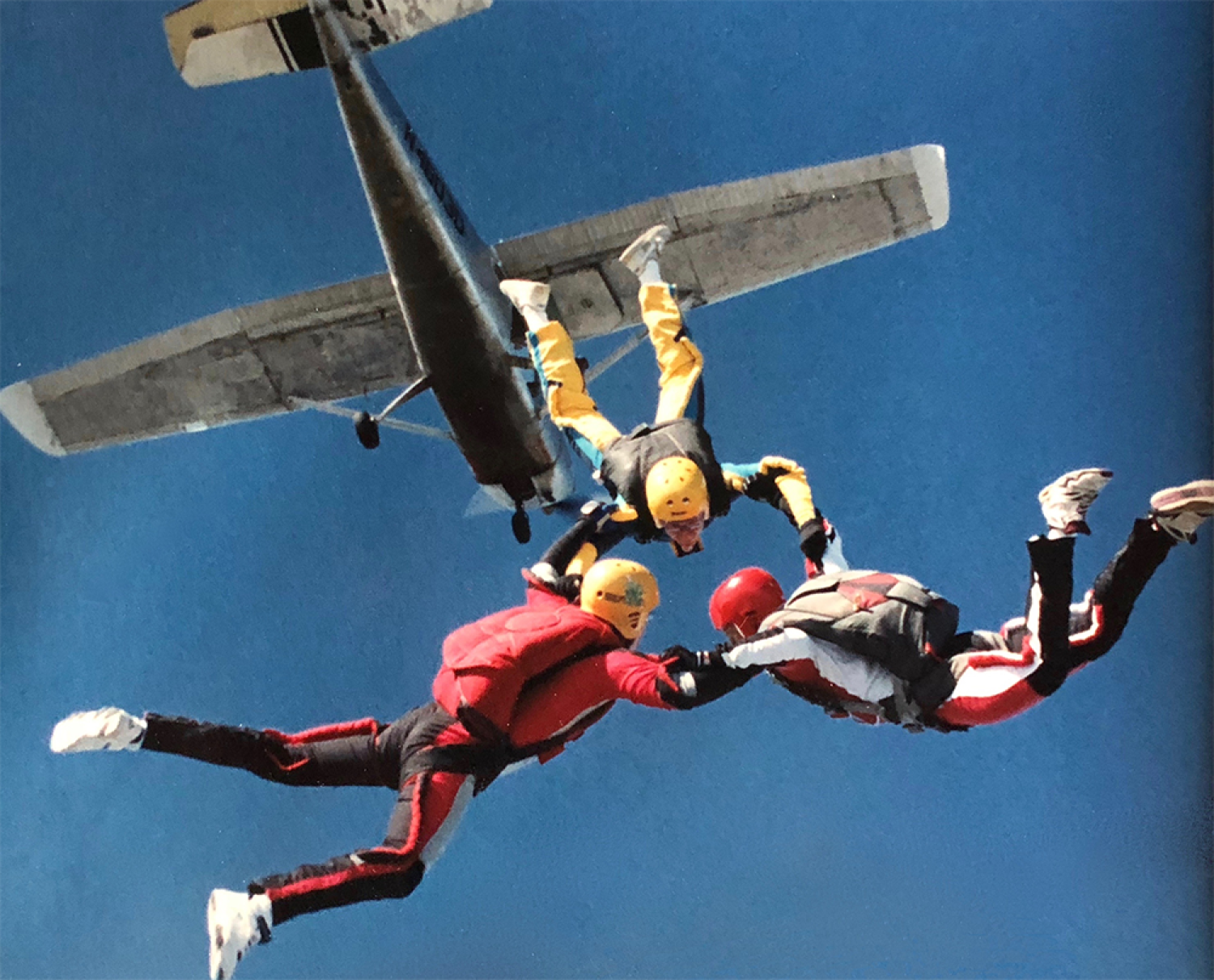AIAA Spotlights Professor Hanspeter Schaub

Schaub performs 3-way formation flying with Steven White (top), Ivan Brigman (lower right) and Schaub in the lower left.
Edited from an article by Lawrence Garrett, AIAA Web Editor - Read the unabridged version
The American Institute of Aeronautics and Astronautics has turned its spotlight toward the Rocky Mountains, home of the Glenn L. Murphy Endowed Chair of Aerospace Engineering Sciences (AES) at the University of Colorado Boulder, and Editor-in-Chief of the AIAA Journal of Spacecraft and Rockets (JSR), Dr. Hanspeter Schaub.
Schaub’s lifelong interest in aerospace began at a young age, shaped largely from seeing Star Wars and other Sci-fi films, which created within him “a fascination with space travel.”
But growing up in Switzerland, Schaub noted, afforded him little-to-no opportunity to pursue an education in aerospace engineering. Fortunately, he earned the chance to spend a year in the United States as a high school exchange student and that allowed him to learn about the many opportunities to pursue aerospace engineering degrees.
Following high school, Schaub came to Texas A&M University to study aerospace engineering, a curriculum that combined his “passion for space travel, physics and math.”Schaub earned his B.S. in Aerospace Engineering in May 1992, graduating Magna Cum Laude. He continued at Texas A&M, earning his M.S. in Aerospace Engineering in August 1994, and his Ph.D. in Aerospace Engineering in May 1998.
An AIAA Associate Fellow, Schaub is an extremely dedicated educator, researcher, and mentor. In addition to his endowed chair position and service as editor-in-chief of JSR, he’s also the university’s director for the Autonomous Vehicle Systems (AVS) Laboratory, the AES associate chair of graduate affairs, the Laboratory for Atmospherics and Space Physics (LASP) senior associate for engineering research and education, and associate editor of IEEE Transactions on Aerospace and Electronic Systems.
Schaub said he was drawn to teaching by his passion for and enjoyment of the “research side of aerospace engineering.” But as a graduate student, before becoming a professor, Schaub was already teaching, having earned jumpmaster and instructor teaching ratings as a skydiver. Whatever the venue, he’s “always enjoyed teaching.”
Schaub’s research laboratory is in the midst of supporting the “attitude dynamics and estimation algorithm development and simulation for a Mars mission,” and that their development was helpful toward those efforts and led to some fascinating new formulations for complex spacecraft designs.
Schaub pointed to the ongoing efforts to land large robots on Mars, and the commercial space industry’s development of reusable rockets, which will “significantly drive down the cost to access space.”
He also noted that a significant benefit of being in the aerospace engineering field today is that it is “full of exciting research in a broad and diverse set of topics,” and that aerospace programs are “undergoing aggressive growth” with no end in sight.
Looking to the future, Schaub believes cheaper access to space will be “transformative,” and will “allow us to advance space technology at a pace unseen in the past.” He said he’s also “fascinated with the massive satellite constellations being proposed,” and that to make them a reality, “new paradigms for mission development and control” will be needed.
He pointed to the small satellite market as a facilitator, a market that allows the satellite engineer to develop and test “very advanced autonomous control systems.” With the ability to field and test new space-related autonomy, Schaub thinks “we’ll see breakthroughs in the spacecraft robustness and independence, allowing new types of lower cost missions to be considered.”

